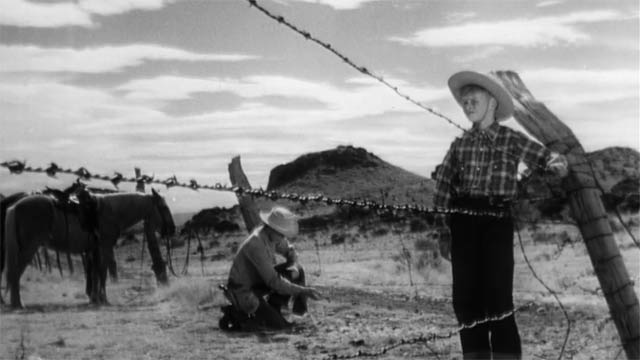
Peter Miller’s documentary Projections of America reveals the story of American-made World War II propaganda films, designed to reassure the soon-to-be-occupied Europeans. “Propaganda” is a sinister word, and the surprise in Projections of America is how indirect, subtle and superficially benign the filmmakers were. The goal of the films was to make the liberating Americans seem not so scary, even though they were bombing Europe and then showing up heavily armed en masse and speaking only English.
The government tapped Hollywood screenwriter Robert Riskin (It Happened One Night, Mr. Deeds Goes to Town) to make a series of movies, and Projections of America is also very much Riskin’s story. We even see Riskin’s family home movies and hear directly from his children (whose mother was the actress Fay Wray).
We are used to government propaganda being bombastic, obvious and heavy handed, which these films are not. Riskin’s team made slice-of-American-life films to showcase workaday America through the daily experiences of Americans – with their implicit American values shining through.
One film, Swedes in America, hosted by Ingrid Bergman, showed just one tile in the American mosaic, but the everyday lives of Swedish-Americans resonated with other European ethnicities, who could imagine themselves comfortable in American society. Another movie focused on a popular American immigrant from Italy, Arturo Toscanini. And still another film brought a boy from bombed-out Britain to the American West to show him the real-life cowboy experience firsthand (how cool that must have been!).
The most popular movie in the series was Autobiography of a Jeep, which tracked every step of a Jeep’s journey from its American assembly plant to its use in wartime Europe – with the Jeep’s internal dialogue as the film’s narration.
The movies, of course, show a favorable and idealized, but not completely phony, view of America. Certainly, the films did not dwell on problems of American society, such as racial segregation. One movie depicts a small town receiving European refugees at first with distrust, but finally with acceptance. The overall impact of the movies was to depict America and Americans as free, boisterous and alive with possibilities. That, at its core, was not untruthful.
Projections of America is narrated by John Lithgow.
The International Film Festival of North Hollywood (IFFNOHO) will host Projections of America’s LA premiere on Saturday, April 30. Autobiography of a Jeep is also playing separately at IFFNOHO.

